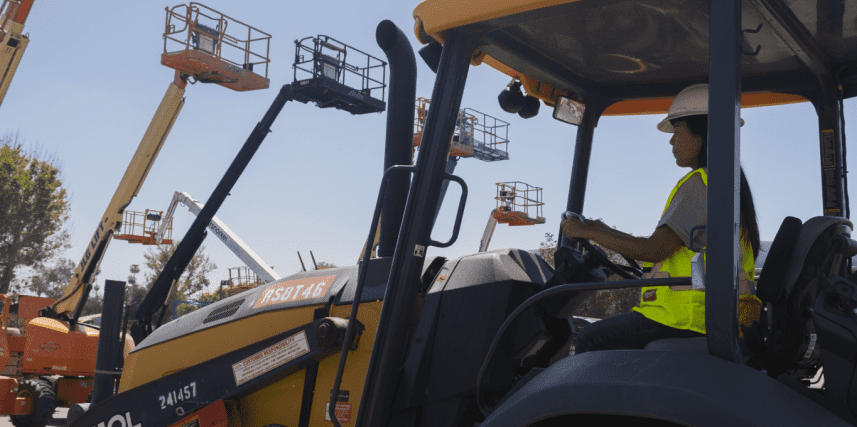

Effective fleet management is the cornerstone for an efficient and profitable construction and off-road vehicle business. Successful fleet management helps optimize daily operations, ensure safety, and manage costs.
Managing such a fleet starts with a plan — a strategy that prioritizes the organization and its goals. From defining the purpose of your fleet to planning how to operate a fleet, following a step-by-step plan will help ensure the optimization and profitability of an organization’s fleet.
This article will look at what a management strategy is and some of the key parts of a good strategy. After which, you may consider implementing a successful fleet management strategy.
A fleet management strategy helps to organize the daily and future operations of a construction and off-road vehicle fleet. To ensure the smooth functioning of such fleets, it is essential to build a strategic plan based on the following:
Let’s take a look at what each point entails.
Customizing your fleet management strategy means that all data and outcomes can work to drive your business forward. This, of course, includes choosing the right management software so your business can track the data it needs to keep its fleet up and running.
Here’s where telematics becomes essential. A telematics-based fleet management software supports the tracking and monitoring of construction and off-road fleets in real-time, anywhere in the world, providing you with large volumes of data you can hone in on.
So, no matter where you are, fleet managers can access all fleet vehicles’ location and usage statistics: track fuel consumption, maintenance schedules, problems, and operations using digital fleet management systems. This directly translates to improving productivity and reducing costs and downtime.
This data supports the ongoing planning and daily operations. Use it to inform everyday performance or to set longer-term goals. With data at your fingertips, business owners and fleet managers can ask themselves critical questions to better understand how to manage their fleets and serve their customers. Consider the following questions:
When creating a strategy to manage your construction or equipment rental business, answer these questions to help direct your company’s focus. In the construction sector, fleets are made up of highly specialized equipment instead of hundreds of similar vehicles as is common in commercial on-road fleets.
With this, both construction and rental businesses need to stay ahead of maintenance to keep vehicles available for use. Construction companies need vehicles to complete projects on time whereas rental companies need their vehicles in commission to continuously rent them out.
When drafting a strategy, fleet managers are encouraged to communicate with different departments to ensure they have a complete picture of the daily operations, challenges, and needs.
Creating a fleet management strategy helps to inform the lifecycle of a fleet and its regular maintenance schedules to ensure peak performance upon each use. Preventative maintenance is also vital for reducing unnecessary repair costs.
Different elements, such as weather, supply chain, strikes, or unexpected workloads, can affect performance. A proper fleet management strategy will consider all the possibilities.
Businesses will face both successes and challenges when managing a fleet. Thus, fleet managers should conduct frequent evaluations to ensure the fleet management strategy is up-to-date. Audits help fleet managers review their fleet with an unbiased lens to optimize compliance, efficiency, and safety measures.
Regular reviews allow companies to address discrepancies head-on before any issues become unmanageable.
When it comes to operating construction and off-road vehicles, safety must always come first. A detailed fleet management strategy will consider optimizing safety at each step, always pursuing these principles.
By prioritizing safety, companies are in the best position to protect their workers, and reduce costs due to accidents or breakdowns and other expenses.
A well-devised fleet management strategy is the key to running a successful business with any fleet, but especially in the construction sector.
Let’s review a few of the benefits of this strategy.
With any new process or change, some roadblocks are to be expected. That said, it’s best to be upfront with them for quicker and easier problem-solving.
Let’s review some potential challenges with implementing a new fleet management strategy.
Managing off-road and construction vehicles requires a well-thought-out plan and a fleet management strategy. This strategy will help fleet managers and businesses better prepare and maintain maintenance schedules, audits, safety checks, and daily operations.
Book a demo today to learn more about hands-on solutions that will transform your construction or rental company.


Be first to hear about product launches, updates, and industry insights